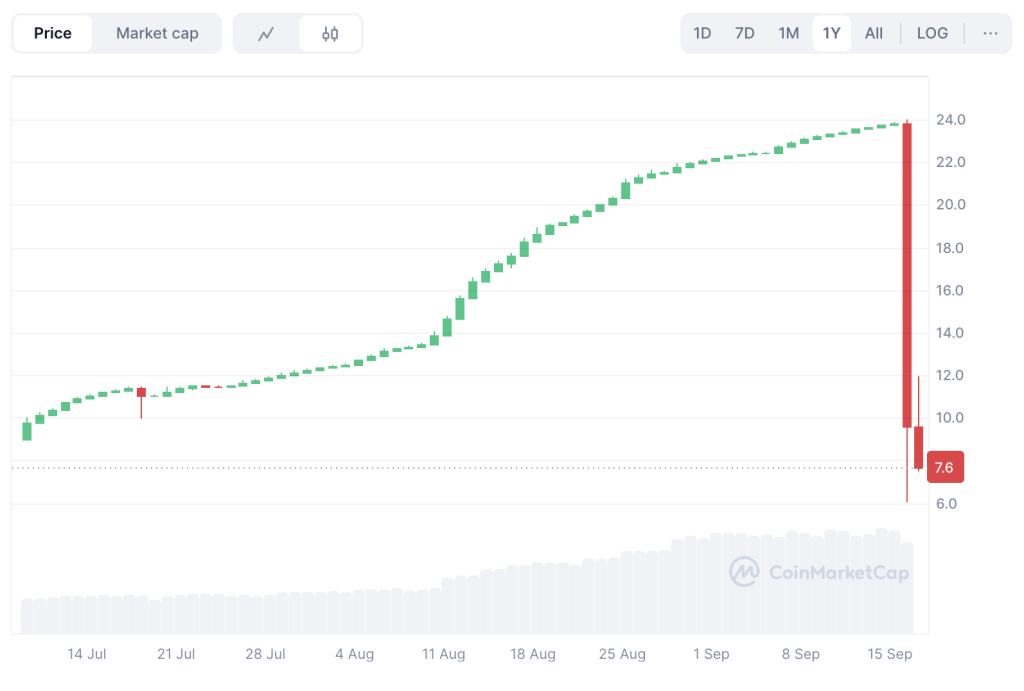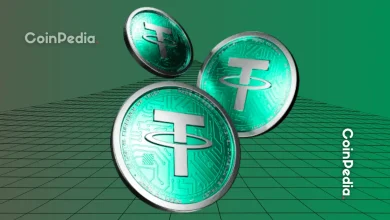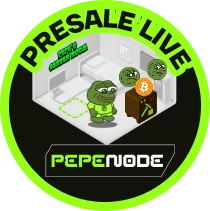
JuCoin token price crashed 70% within minutes, wiping billions from market capitalization.
Over $1.39 billion JU trades in one day as panic-driven sell-offs intensified.
Analysts warn JU’s unstable swings suggest manipulation, raising doubts about long-term stability and investor trust.
The crypto market never fails to surprise, and this time it was JuCoin’s turn in the spotlight. The platform’s native token, JU, shocked traders when its price suddenly dropped from a high of $24 to $7 in just a few minutes.
That’s a stunning 70% crash that has shaken investor confidence and wiped billions from its market cap.
$1 Billion Sell-Off and Liquidations
JU token markets were shaken by a wave of heavy sell orders and liquidations that quickly dragged prices lower. In just one day, more than $1.39 billion worth of JU was traded, as holders rushed for the exits in reaction to mounting regulatory scrutiny.
The panic didn’t stop there. JU’s 24-hour trading volume dropped by 23.9% to $1.03 billion, showing how quickly demand dried up once fear took over.

At the same time, the token’s turnover ratio jumped to 7.24, a clear signal of sharp volatility in an already fragile, low-liquidity environment.
Analysts note that the spike in JU’s unusual trading activity looks abnormal compared to Bitcoin or Ethereum. Such unstable swings hint at possible manipulation and raise doubts about JU’s long-term stability.
JuCoin’s quick response
Not long after the incident, JuCoin stepped in with a public statement. The team insisted that all operations are running as usual and, most importantly, that users’ funds are safe.
They explained that business functions remain unaffected, trying to calm fears of a deeper problem. Although the exchange didn’t provide clear details about what triggered the collapse.
Ju Token Technical Analysis
After dropping to $7, attention now turns to whether it can stay above the yearly low of $6.03. Some traders see room for a small rebound after the steep fall, but the overall market mood is still weak.
The RSI shows oversold levels, which often signal panic selling. At the same time, the MACD histogram has turned negative (-0.17), confirming a loss of momentum and a stronger bearish trend.
For now, a close above $9.87 could spark a short-lived bounce, often called a “dead-cat bounce.” But analysts warn that a real recovery can only happen if JU climbs back to $15 and holds that level.
Never Miss a Beat in the Crypto World!
Stay ahead with breaking news, expert analysis, and real-time updates on the latest trends in Bitcoin, altcoins, DeFi, NFTs, and more.
FAQs
JU’s price fell 70% due to a massive $1.39 billion sell-off, likely triggered by panic over regulatory scrutiny and low market liquidity, causing extreme volatility.
JuCoin stated user funds are secure and operations are normal. However, the token’s extreme volatility and unclear crash cause suggest ongoing market risks.
JuCoin issued a statement assuring users that funds are safe and operations are unaffected. They did not specify the crash’s cause, raising concerns among traders.
Trust with CoinPedia:
CoinPedia has been delivering accurate and timely cryptocurrency and blockchain updates since 2017. All content is created by our expert panel of analysts and journalists, following strict Editorial Guidelines based on E-E-A-T (Experience, Expertise, Authoritativeness, Trustworthiness). Every article is fact-checked against reputable sources to ensure accuracy, transparency, and reliability. Our review policy guarantees unbiased evaluations when recommending exchanges, platforms, or tools. We strive to provide timely updates about everything crypto & blockchain, right from startups to industry majors.
Investment Disclaimer:
All opinions and insights shared represent the author's own views on current market conditions. Please do your own research before making investment decisions. Neither the writer nor the publication assumes responsibility for your financial choices.
Sponsored and Advertisements:
Sponsored content and affiliate links may appear on our site. Advertisements are marked clearly, and our editorial content remains entirely independent from our ad partners.








